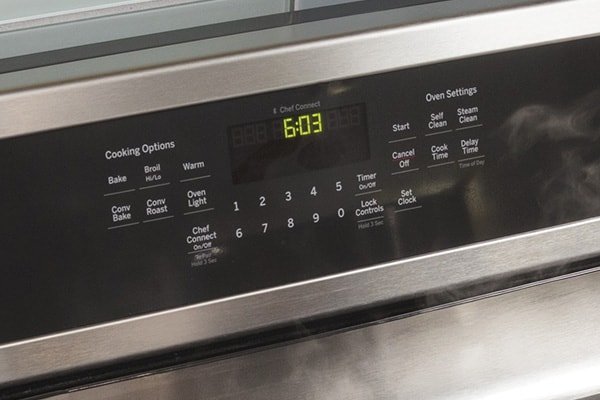
GE ovens and ranges are designed to work efficiently, but like all appliances, they sometimes encounter hiccups. When faced with an F1 error, it’s a sign that the oven control board has detected a fault – often related to the electronic control or the keypad. While seeing such a code might initially feel daunting, resetting your oven can frequently clear the error and get your appliance back to running smoothly. Let’s walk through the process together, ensuring you handle it with ease and confidence.
Understanding the Error Code F1
Before jumping into solutions, it’s essential to understand what this error code means. Error Code F1 on GE ovens usually indicates an issue with the electronic oven control. Think of it like your oven’s brain experiencing a minor glitch or an unexpected hiccup. This can be triggered by various factors, such as power surges, a faulty control board, or even something as simple as a stuck button.
You might wonder, “Why does my oven even have these codes?” Well, similar to a fitness tracker alerting you about steps taken or heart rate spikes, error codes are your oven’s way of providing crucial feedback. They’re designed to help you—or a technician—diagnose issues more efficiently. When the F1 code pops up, it might feel like your oven is speaking another language. But, deciphering this language is simpler than it seems.
The F1 error often comes with a persistent beeping sound, which can be annoying, to say the least. This sound is your oven’s way of saying, “Hey, something’s not right here!” By understanding this, you’re already halfway to fixing the issue. Armed with this knowledge, let’s move on to address how you can tackle this problem head-on.
Steps to Reset Your GE Oven
When faced with an annoying and persistent F1 code, the first step is to reset your oven. It’s akin to rebooting your computer when it acts up. Here’s the deal: sometimes, all your oven needs is a quick reset to clear its temporary memory cache. So how do you do it?
First off, locate your oven’s circuit breaker. If you’re unsure where it is, it’s typically found in your home’s main electrical panel. Once you find it, flip the switch off to cut the power to your oven. Think of it like giving your oven a brief nap. This should be done for about a minute. Why? Because, just like when rebooting a sluggish computer, a short wait can help clear any temporary glitches.
After the minute is up, switch the power back on. Head back to the oven and see if the F1 code is gone. In many cases, this simple reset does the trick. However, if the beeping persists and the F1 remains stubbornly on display, it might be time to explore other troubleshooting methods. But take heart—most resets are uncomplicated and get your oven back in action.
Advanced Troubleshooting and Solutions
If resetting the oven didn’t help, don’t lose hope. Often, persistent F1 errors are due to a faulty control board or a sensor issue. Let’s delve into some advanced steps you might consider. Think of these as plan B, just in case plan A doesn’t pan out.
One potential solution is inspecting the key panel. Sometimes, a stuck or malfunctioning key can continuously send signals to the control board, causing the F1 error. To check this, gently press each key, ensuring none are jammed. If a key feels stuck or doesn’t press smoothly, it could be the root cause of the error.
Another option is addressing the control board itself. This part can sometimes fail due to age or wear, much like how a remote control stops working after years of use. While replacing a control board can seem daunting, many online tutorials can guide you, or you might opt to call in professional help. It’s crucial to ensure you’re working safely by unplugging your appliance before any repair attempts.
Preventing Future Errors
You might be thinking, “I don’t want to deal with this again!” And I hear you. Prevention is always better than cure. One effective way to prevent future F1 errors is ensuring your oven is properly maintained. Regular cleaning of the oven’s keypad, addressing spills promptly, and avoiding excessive moisture around the control panel can go a long way.
Moreover, consider investing in a surge protector for your kitchen appliances. Power surges can cause unexpected issues for electronic components, similar to how a sudden power cut can affect your computer. A surge protector acts like an umbrella, shielding your appliances from unexpected electrical spikes.
In conclusion, while an F1 error can momentarily throw a wrench in your culinary plans, it’s often a manageable issue. By understanding what the code means and following these simple steps, you can get your GE oven back in action with minimal fuss. Remember, troubleshooting is a process, and each step you take brings you closer to a solution. Happy cooking!